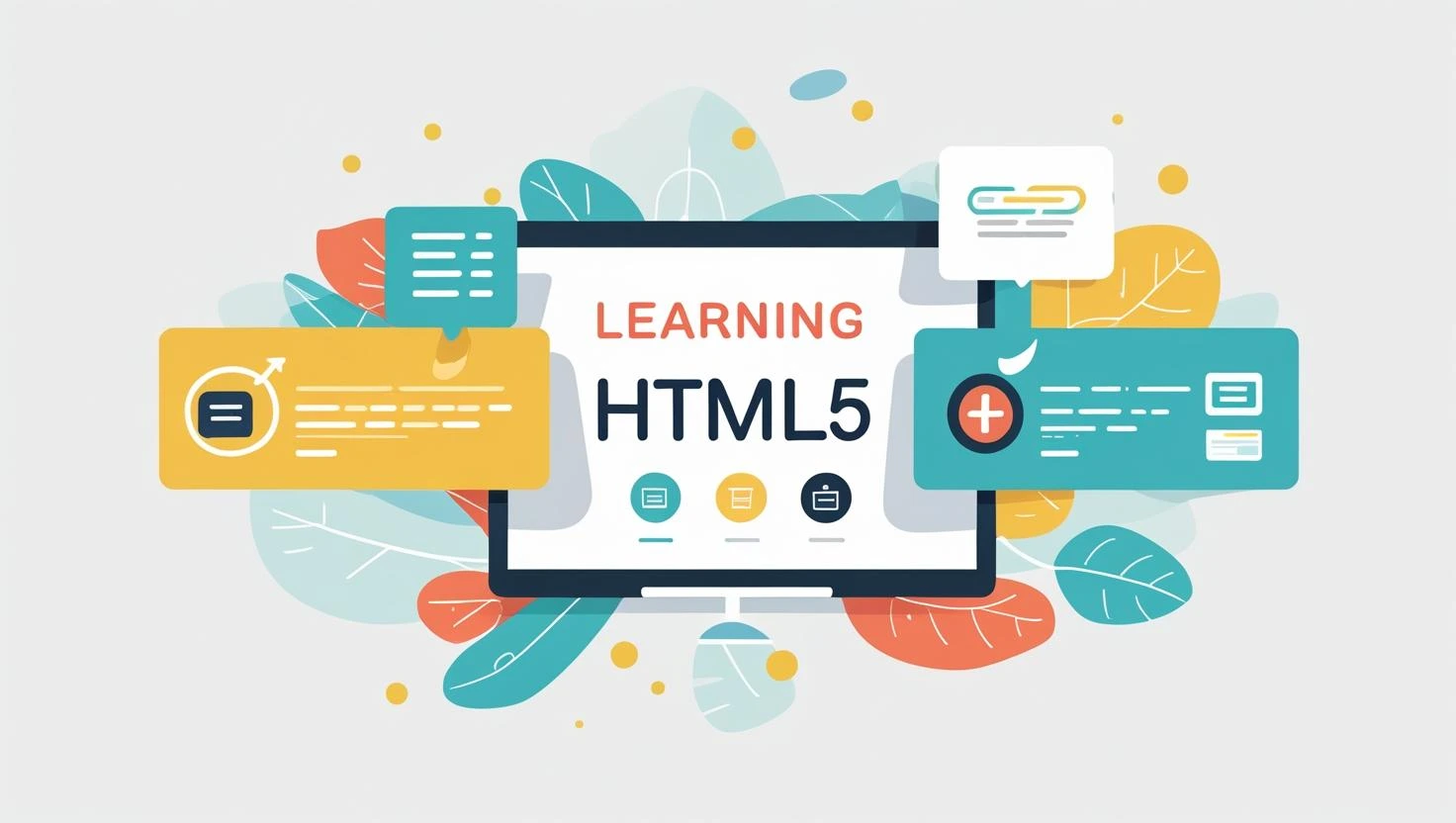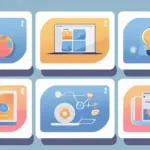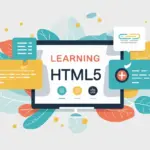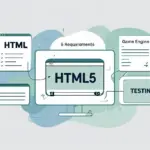So you’ve decided to learn HTML5? Good call. HTML5 is the backbone of every website you visit—seriously, it’s like learning the grammar of the internet. Whether you’re trying to build a simple blog, a fancy portfolio, or even a web game, HTML5 is the first step. But where do you even start? Let me walk you through the five foundational basics you need to grasp if you want to feel at home in the world of web development.
1. Understanding the Structure of an HTML5 Document
Doctype Declaration and HTML Boilerplate
Before you build anything, you need a solid foundation. In HTML5, that starts with the <!DOCTYPE html> declaration. It tells the browser, “Hey, I’m using the latest version of HTML.” Right after that, you’ll see the basic layout, often called the boilerplate.
Here’s what a typical HTML5 boilerplate looks like:
htmlCopyEdit<!DOCTYPE html>
<html lang="en">
<head>
<meta charset="UTF-8">
<title>My First Page</title>
</head>
<body>
<h1>Hello, world!</h1>
</body>
</html>
Everything inside the <head> tag sets the stage—think metadata, titles, and links to CSS files. The <body> tag is where the actual content lives. It’s where the magic happens.
Essential Tags: <head>, <body>, and Beyond
You’ll use a bunch of tags often, like:
<h1>to<h6>for headings<p>for paragraphs<a>for links<img>for images
Get comfortable with these building blocks because they’re the LEGO bricks of your webpage.
2. Mastering HTML5 Semantic Elements
Why Semantics Matter
Imagine reading a book with no chapters, no paragraphs, no bold titles—just a wall of text. Not fun, right? That’s what non-semantic HTML feels like to browsers and screen readers. Semantic tags help organize your content meaningfully and improve accessibility and SEO.
Common Semantic Tags and Their Use
HTML5 introduced a bunch of new tags that describe their purpose clearly, making your code cleaner and easier to maintain.
<header>, <nav>, <main>, <footer>
These tags tell browsers and developers what each section does:
<header>usually contains the site title or logo<nav>holds your navigation menu<main>is the core content area<footer>is for copyright info, contact links, etc.
<article> vs <section>
These two often confuse beginners. Think of <article> as self-contained content, like a blog post. <section> is more like a grouping of related content under a broader topic. Use them wisely, and your page becomes much more readable—for both humans and machines.
3. Incorporating Multimedia: Audio and Video
Adding Videos Using <video> Tag
Want to add a video to your site without using YouTube? HTML5’s <video> tag has your back. It supports multiple file formats and gives you built-in controls like play, pause, and volume.
Example:
htmlCopyEdit<video controls>
<source src="myvideo.mp4" type="video/mp4">
Your browser does not support the video tag.
</video>
Embedding Audio with <audio> Tag
Same idea, but for sound. Perfect for podcasts, music, or sound effects in games.
Example:
htmlCopyEdit<audio controls>
<source src="mysong.mp3" type="audio/mpeg">
Your browser does not support the audio element.
</audio>
Fallbacks for Browser Support
Always include fallback content inside your <audio> or <video> tags. Not every browser will support every format, so give users a backup plan.
4. Forms and Input Types in HTML5
New Input Types in HTML5
HTML5 introduced a bunch of new input types that make collecting data a breeze. Forget the old “type=’text’ for everything” method. Now you have:
emailteldatenumberrange
Each one helps validate input automatically and offers mobile-friendly keyboards.
Form Validation Without JavaScript
One of HTML5’s coolest features? Built-in validation. You can make a field required, set a pattern, or even define minimum and maximum values—all without writing a single line of JavaScript.
Example:
htmlCopyEdit<input type="email" required>
Placeholder, Required, and Autofocus Attributes
These little attributes improve user experience a ton:
placeholdergives hints inside fieldsrequiredensures users don’t skip fieldsautofocussets the cursor on a field when the page loads
It’s the small details that make forms feel smooth.
5. HTML5 APIs You Should Know
Canvas API for Drawing Graphics
Want to draw directly on the screen? The <canvas> element lets you render shapes, images, even mini-games using JavaScript. Think of it like a blank artist’s canvas where your imagination paints the pixels.
Geolocation API
With this, your site can detect a user’s location (with permission, of course). It’s great for showing nearby stores, weather info, or personalized content based on where someone is.
Local Storage for Saving Data
Tired of cookies? HTML5 introduced local storage, which lets your site store data in the user’s browser—no server required. Great for saving game scores, user preferences, and more.
Example:
javascriptCopyEditlocalStorage.setItem("username", "John");
let user = localStorage.getItem("username");
Common Mistakes Beginners Make
- Forgetting the
<!DOCTYPE html>declaration - Nesting tags improperly (like putting a
<div>inside a<span>) - Ignoring semantic tags
- Using old attributes like
bgcolorinstead of CSS - Not closing tags properly
These may seem small, but they can break your site or confuse search engines.
Tips to Learn HTML5 Faster
- Build, don’t just read. Create mini-projects like a personal homepage or a to-do list app.
- Use online playgrounds. Tools like CodePen or JSFiddle let you test your code instantly.
- Follow the MDN Web Docs. It’s the gold standard for web development documentation.
- Join coding communities. Reddit, Stack Overflow, and Discord groups are full of helpful folks.
- Stay curious. The more you experiment, the faster you’ll learn.
Conclusion
Learning HTML5 isn’t rocket science, but it is the first rocket you need to launch into the world of web development. Start with understanding the document structure, then dive into semantic tags, forms, media, and APIs. Don’t rush it—treat it like learning a new language. Speak it daily. Break it. Fix it. And most of all, have fun with it.
Because once you get the basics down, the web becomes your playground.



